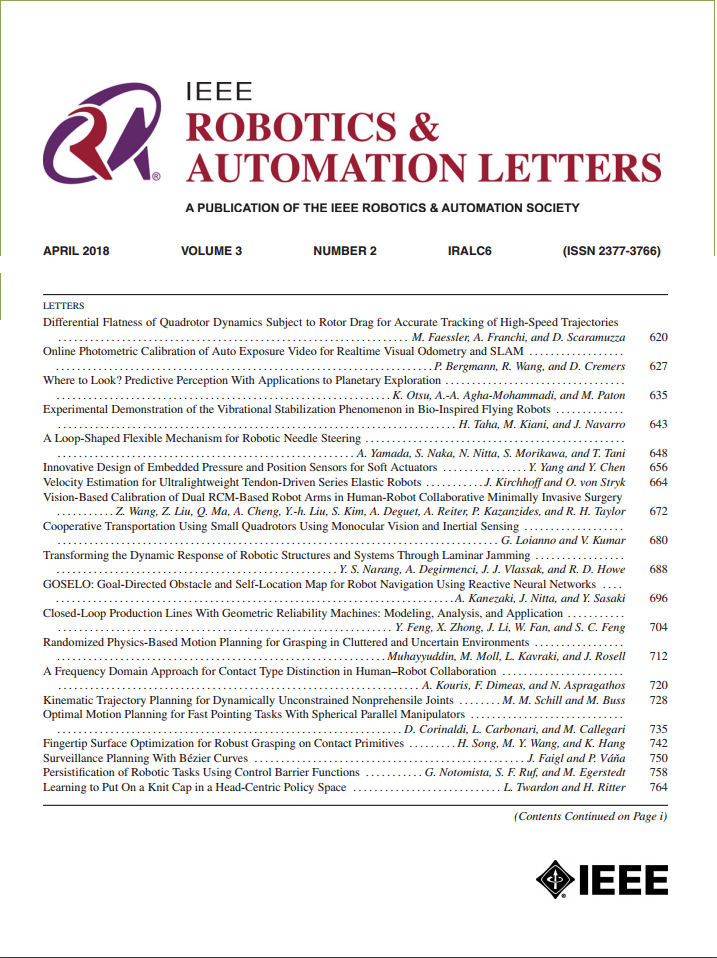通过任务驱动的地图压缩与有袋类地面-空中机器人团队合作探索
IF 5.3
2区 计算机科学
Q2 ROBOTICS
引用次数: 0
摘要
对未知环境的有效探索对于自主机器人来说至关重要,特别是在有限通信的受限和大规模场景中。为了应对这一挑战,我们提出了一个有袋类地面-空中机器人团队的协作探索框架,该框架利用了两个平台的互补能力。该框架采用基于图的路径规划算法,引导空中机器人在预期收益明显超过地面机器人的区域进行探索和部署,如大型开放空间或地面平台无法到达的区域,从而最大化覆盖和效率。为了促进大规模空间信息共享,我们引入了一种带宽高效、任务驱动的地图压缩策略。这种方法使每个机器人能够重建特定分辨率的体图,同时保留勘探关键细节,即使在高压缩率下也是如此。通过选择性地压缩和共享关键数据,最小化了通信开销,确保了有效的地图集成以进行协同路径规划。仿真和实际实验验证了该方法在提高勘探效率的同时显著减少数据传输的有效性。本文章由计算机程序翻译,如有差异,请以英文原文为准。
Collaborative Exploration With a Marsupial Ground-Aerial Robot Team Through Task-Driven Map Compression
Efficient exploration of unknown environments is crucial for autonomous robots, especially in confined and large-scale scenarios with limited communication. To address this challenge, we propose a collaborative exploration framework for a marsupial ground-aerial robot team that leverages the complementary capabilities of both platforms. The framework employs a graph-based path planning algorithm to guide exploration and deploy the aerial robot in areas where its expected gain significantly exceeds that of the ground robot, such as large open spaces or regions inaccessible to the ground platform, thereby maximizing coverage and efficiency. To facilitate large-scale spatial information sharing, we introduce a bandwidth-efficient, task-driven map compression strategy. This method enables each robot to reconstruct resolution-specific volumetric maps while preserving exploration-critical details, even at high compression rates. By selectively compressing and sharing key data, communication overhead is minimized, ensuring effective map integration for collaborative path planning. Simulation and real-world experiments validate the proposed approach, demonstrating its effectiveness in improving exploration efficiency while significantly reducing data transmission.
求助全文
通过发布文献求助,成功后即可免费获取论文全文。
去求助
来源期刊

IEEE Robotics and Automation Letters
Computer Science-Computer Science Applications
CiteScore
9.60
自引率
15.40%
发文量
1428
期刊介绍:
The scope of this journal is to publish peer-reviewed articles that provide a timely and concise account of innovative research ideas and application results, reporting significant theoretical findings and application case studies in areas of robotics and automation.
 求助内容:
求助内容: 应助结果提醒方式:
应助结果提醒方式:


